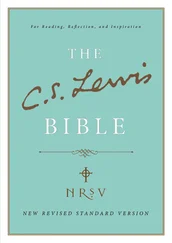Standard Template Library Programmer's Guide
Здесь есть возможность читать онлайн «Standard Template Library Programmer's Guide» весь текст электронной книги совершенно бесплатно (целиком полную версию без сокращений). В некоторых случаях можно слушать аудио, скачать через торрент в формате fb2 и присутствует краткое содержание. Жанр: Программирование, Справочники, на английском языке. Описание произведения, (предисловие) а так же отзывы посетителей доступны на портале библиотеки ЛибКат.
- Название:Standard Template Library Programmer's Guide
- Автор:
- Жанр:
- Год:неизвестен
- ISBN:нет данных
- Рейтинг книги:4 / 5. Голосов: 1
-
Избранное:Добавить в избранное
- Отзывы:
-
Ваша оценка:
- 80
- 1
- 2
- 3
- 4
- 5
Standard Template Library Programmer's Guide: краткое содержание, описание и аннотация
Предлагаем к чтению аннотацию, описание, краткое содержание или предисловие (зависит от того, что написал сам автор книги «Standard Template Library Programmer's Guide»). Если вы не нашли необходимую информацию о книге — напишите в комментариях, мы постараемся отыскать её.
Standard Template Library Programmer's Guide — читать онлайн бесплатно полную книгу (весь текст) целиком
Ниже представлен текст книги, разбитый по страницам. Система сохранения места последней прочитанной страницы, позволяет с удобством читать онлайн бесплатно книгу «Standard Template Library Programmer's Guide», без необходимости каждый раз заново искать на чём Вы остановились. Поставьте закладку, и сможете в любой момент перейти на страницу, на которой закончили чтение.
Интервал:
Закладка:
There were some interesting ideas, but the research didn't lead to practical results because Tecton was functional. We believed Backus's idea that we should liberate programming from the von Neumann style, and we didn't want to have side effects. That limited our ability to handle very many algorithms that require the notion of state and side effects.
The interesting thing about Tecton, which I realized sometime in the late 70s, was that there was a fundamental limitation in the accepted notion of an abstract data type. People usually viewed abstract data types as something which tells you only about the behavior of an object and the implementation is totally hidden. It was commonly assumed that the complexity of an operation is part of implementation and that abstraction ignores complexity. One of the things that is central to generic programming as I understand it now, is that complexity, or at least some general notion of complexity, has to be associated with an operation.
Let's take an example. Consider an abstract data type stack. It's not enough to have Push and Pop connected with the axiom wherein you push something onto the stack and after you pop the stack you get the same thing back. It is of paramount importance that pushing the stack is a constant time operation regardless of the size of the stack. If I implement the stack so that every time I push it becomes slower and slower, no one will want to use this stack.
We need to separate the implementation from the interface but not at the cost of totally ignoring complexity. Complexity has to be and is a part of the unwritten contract between the module and its user. The reason for introducing the notion of abstract data types was to allow interchangeable software modules. You cannot have interchangeable modules unless these modules share similar complexity behavior. If I replace one module with another module with the same functional behavior but with different complexity tradeoffs, the user of this code will be unpleasantly surprised. I could tell him anything I like about data abstraction, and he still would not want to use the code. Complexity assertions have to be part of the interface.
Around 1983 I moved from GE Research to the faculty of the Polytechnic University, formerly known as Brooklyn Polytechnic, in NY. I started working on graph algorithms. My principal collaborator was Aaron Kershenbaum, now at IBM Yorktown Heights. He was an expert in graph and network algorithms, and I convinced him that some of the ideas of high order and generic programming were applicable to graph algorithms. He had some grants and provided me with support to start working with him to apply these ideas to real network algorithms. He was interested in building a toolbox of high order generic components so that some of these algorithms could be implemented, because some of the network algorithms are so complex that while they are theoretically analyzed, but never implemented. I decided to use a dialect of Lisp called Scheme to build such a toolbox. Aaron and I developed a large library of components in Scheme demonstrating all kinds of programming techniques. Network algorithms were the primary target. Later Dave Musser, who was still at GE Research, joined us, and we developed even more components, a fairly large library. The library was used at the university by graduate students, but was never used commercially. I realized during this activity that side effects are important, because you cannot really do graph operations without side effects. You cannot replicate a graph every time you want to modify a vertex. Therefore, the insight at that time was that you can combine high order techniques when building generic algorithms with disciplined use of side effects. Side effects are not necessarily bad; they are bad only when they are misused.
In the summer of 1985 I was invited back to GE Research to teach a course on high order programming. I demonstrated how you can construct complex algorithms using this technique. One of the people who attended was Art Chen, then the manager of the Information Systems Laboratory. He was sufficiently impressed to ask me if I could produce an industrial strength library using these techniques in Ada, provided that I would get support. Being a poor assistant professor, I said yes, even though I didn't know any Ada at the time. I collaborated with Dave Musser in building this Ada library. It was an important undertaking, because switching from a dynamically typed language, such as Scheme, to a strongly typed language, such as Ada, allowed me to realize the importance of strong typing. Everybody realizes that strong typing helps in catching errors. I discovered that strong typing, in the context of Ada generics, was also an instrument of capturing designs. It was not just a tool to catch bugs. It was also a tool to think. That work led to the idea of orthogonal decomposition of a component space. I realized that software components belong to different categories. Object-oriented programming aficionados think that everything is an object. When I was working on the Ada generic library, I realized that this wasn't so. There are things that are objects. Things that have state and change their state are objects. And then there are things that are not objects. A binary search is not an object. It is an algorithm. Moreover, I realized that by decomposing the component space into several orthogonal dimensions, we can reduce the number of components, and, more importantly, we can provide a conceptual framework of how to design things.
Then I was offered a job at Bell Laboratories working in the C++ group on C++ libraries. They asked me whether I could do it in C++. Of course, I didn't know C++ and, of course, I said I could. But I couldn't do it in C++, because in 1987 C++ didn't have templates, which are essential for enabling this style of programming. Inheritance was the only mechanism to obtain genericity and it was not sufficient.
Even now C++ inheritance is not of much use for generic programming. Let's discuss why. Many people have attempted to use inheritance to implement data structures and container classes. As we know now, there were few if any successful attempts. C++ inheritance, and the programming style associated with it are dramatically limited. It is impossible to implement a design which includes as trivial a thing as equality using it. If you start with a base class X at the root of your hierarchy and define a virtual equality operator on this class which takes an argument of the type X, then derive class Y from class X. What is the interface of the equality? It has equality which compares Y with X. Using animals as an example (OO people love animals), define mammal and derive giraffe from mammal. Then define a member function mate, where animal mates with animal and returns an animal. Then you derive giraffe from animal and, of course, it has a function mate where giraffe mates with animal and returns an animal. It's definitely not what you want. While mating may not be very important for C++ programmers, equality is. I do not know a single algorithm where equality of some kind is not used.
You need templates to deal with such problems. You can have template class animal which has member function mate which takes animal and returns animal. When you instantiate giraffe, mate will do the right thing. The template is a more powerful mechanism in that respect.
However, I was able to build a rather large library of algorithms, which later became part of the Unix System Laboratory Standard Component Library. I learned a lot at Bell Labs by talking to people like Andy Koenig and Bjarne Stroustrup about programming. I realized that C/C++ is an important programming language with some fundamental paradigms that cannot be ignored. In particular I learned that pointers are very good. I don't mean dangling pointers. I don't mean pointers to the stack. But I mean that the general notion of pointer is a powerful tool. The notion of address is universally used. It is incorrectly believed that pointers make our thinking sequential. That is not so. Without some kind of address we cannot describe any parallel algorithm. If you attempt to describe an addition of n numbers in parallel, you cannot do it unless you can talk about the first number being added to the second number, while the third number is added to the fourth number. You need some kind of indexing. You need some kind of address to describe any kind of algorithm, sequential or parallel. The notion of an address or a location is fundamental in our conceptualizing computational processes---algorithms.
Читать дальшеИнтервал:
Закладка:
Похожие книги на «Standard Template Library Programmer's Guide»
Представляем Вашему вниманию похожие книги на «Standard Template Library Programmer's Guide» списком для выбора. Мы отобрали схожую по названию и смыслу литературу в надежде предоставить читателям больше вариантов отыскать новые, интересные, ещё непрочитанные произведения.
Обсуждение, отзывы о книге «Standard Template Library Programmer's Guide» и просто собственные мнения читателей. Оставьте ваши комментарии, напишите, что Вы думаете о произведении, его смысле или главных героях. Укажите что конкретно понравилось, а что нет, и почему Вы так считаете.











